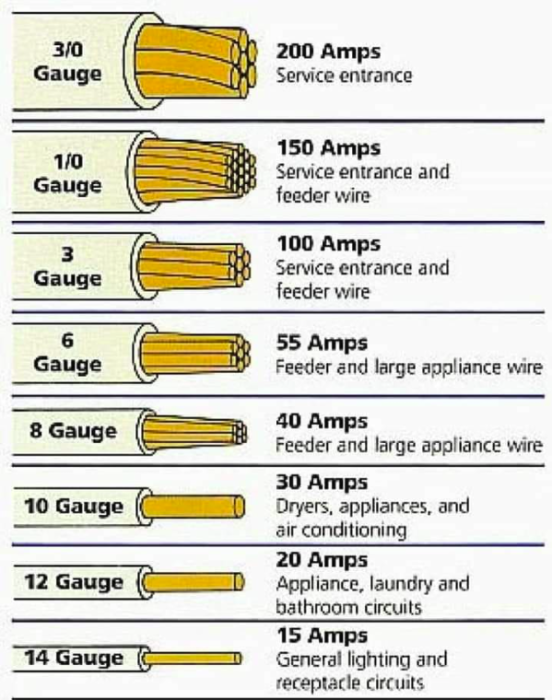Underground Feeder

Underground feeder conductors appear similar to NM and NMC cables except that UF cables contain a solid plastic core and cannot be "rolled" between fingers.
NM and NMC: Non-metallic

NM and NMC conductors are composed of two or more insulated conductors contained in a non-metallic sheath. The coating on NMC cable is non-conducting, flame-resistant and moisture-resistant. Unlike other cables commonly found in homes, they are permitted in damp environments, such as basements.
The following NEC regulations apply to Romex conductors:
- They are not permitted in residential construction higher than three stories, or in any commercial construction.
- They must be protected, secured and clamped to device boxes, junction boxes and fixtures.
- Support devices that may damage the cables, such as bent nails and overdriven staples, are not permitted.
- NM and NMC cables should be secured at intervals that do not exceed 4½ feet, and they should be secured within 12 inches of junction boxes and panels to which they are attached. Cables that do not comply with this rule can sag and are vulnerable to damage.
- They are intended as permanent wiring in homes and should not be used as a substitute for appliance wiring or extension cords.
Note: Some communities have never allowed the use of Romex wiring in residential construction. Armored cable is typically used in these communities.
AC: Armored Cables

Armored cable, also known as BX, was developed in the early 1900s by Edwin Greenfield. It was first called "BX" to abbreviate "product B – Experimental," although AC is far more commonly used today. Like Romex cables, they cannot be used in residences higher than three stories, and the rules for protection and support of AC wiring are essentially the same as the rules for Romex. Unlike Romex, however, AC wiring has a flexible metallic sheathing that allows for extra protection.
SE: Service Entry Conductors

These cables begin at the splice and enter the meter. They are not permitted inside homes, with the exception of "style R" SE cable that can serve as interior wiring in branch circuits for ovens and clothes dryers. Style R cables should be clearly marked on their jacket surfaces.
Knob & Tube:

Most houses constructed prior to World War II were wired using the knob-and-tube method, a system that is now obsolete. They are more difficult to improve than modern wiring systems and can be a fire hazard. Knob-and-tube wiring is supported with ceramic knobs and runs intermittently though ceramic tubes beneath framing and at locations where the wires intersect.
The dissipated heat from knob-and-tube wiring can pose a fire hazard if the wires are enveloped in building insulation. A possible exception is fiberglass insulation, which is fire-resistant, although even this type of insulation should not cover knob-and-tube wiring.
- Knob-and-tube wiring is more vulnerable to damage than modern wiring because it is insulated with fiber materials and varnish, which can become brittle.
- Some insurance companies refuse to write fire insurance for houses with this type of wiring, although this may be remedied if an electrician can verify that the system is safe.
To shed liability, inspectors should recommend that knob and tube wiring systems be inspected by a qualified electrical contractor.

